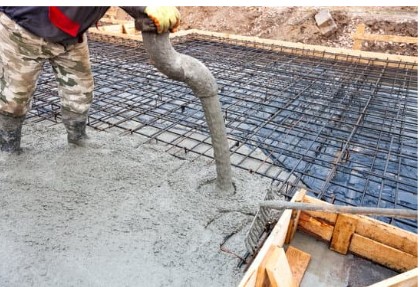Maximizing Concrete Durability: Expert Strategies for Cost-Effective Repairs
Concrete, often seen as indestructible, can still experience issues such as cracks, spalling, and sinking slabs. Ignoring these minor issues can lead to hefty repair bills in the future. However, with the right know-how and techniques, you can make concrete repairs last longer and cost less. In this guide, we'll explore expert tips for long-lasting concrete fixes, from identifying the early signs of damage to using the right materials and application techniques.

Why Concrete Fails
Before diving into repair strategies, let's understand what causes concrete to fail in the first place. Some of the most common culprits include:
- Freeze-thaw cycles that cause expansion and cracking
- Moisture intrusion that leads to erosion and spalling
- Improper mixing or curing during installation
- Heavy loads or poor support underneath slabs
- Soil movement or settling over time
Understanding these causes helps you choose the right repair approach and prevents recurring problems. The goal isn't just to patch concrete; it's to make sure that the patch sticks for years to come.
Always Start with a Proper Assessment
Jumping into repairs without knowing the extent of the damage is like putting a Band-Aid on a broken leg. Take time to inspect:
- The size and depth of the cracks
- Whether the concrete is still structurally sound
- If moisture is present or pooling
- Any signs of ongoing movement or settling
Pro tip: Use a crack gauge or simple ruler to monitor movement over a few days. If the crack continues to widen, you may need to consult a structural engineer before proceeding with repairs.
Choose the Right Repair Method
Not all concrete damage is created equal—and neither are the fixes. Choosing the right repair technique is critical to long-term success. Here are some options:

- Surface Cracks: Use concrete crack sealants or epoxy injections for hairline or surface-level damage.
- Deep or Structural Cracks: Opt for polyurethane injections or rebar reinforcement if the crack affects integrity.
- Spalling or Scaling: A resurfacing compound may restore both function and appearance.
- Sunken Slabs: This usually requires slab jacking (mudjacking) or polyurethane foam injection to lift and level. Matching the method to the damage ensures your repair will stand the test of time.
Use High-Quality Repair Materials
Don't cut corners on materials—it almost always leads to more repairs down the road. Look for:
- Polymer-modified repair mortars for better adhesion and flexibility
- Fast-setting concrete patch products for high-traffic areas
- UV- and weather-resistant sealants for outdoor applications
- Fiber-reinforced concrete for enhanced crack resistance Brands like Quikrete, Sika, and Sakrete offer reliable, contractor-grade options for most types of fixes.
Prep the Surface Like a Pro
You could have the best repair product on the market, but if your surface prep is sloppy, it won't matter. Surface preparation is everything. Here’s how to do it right:
Clean thoroughly using a wire brush, vacuum, or pressure washer.
This in-depth guide on Maximizing Concrete Durability provides valuable expert strategies for cost effective repairs, ensuring longevity of concrete structures while reducing maintenance costs. It's a must read resource.
This comprehensive guide on maximizing concrete durability provides expert strategies for cost-effective repairs, ensuring longevity of structures while staying within budget. The practical insights and case studies are invaluable resources.














